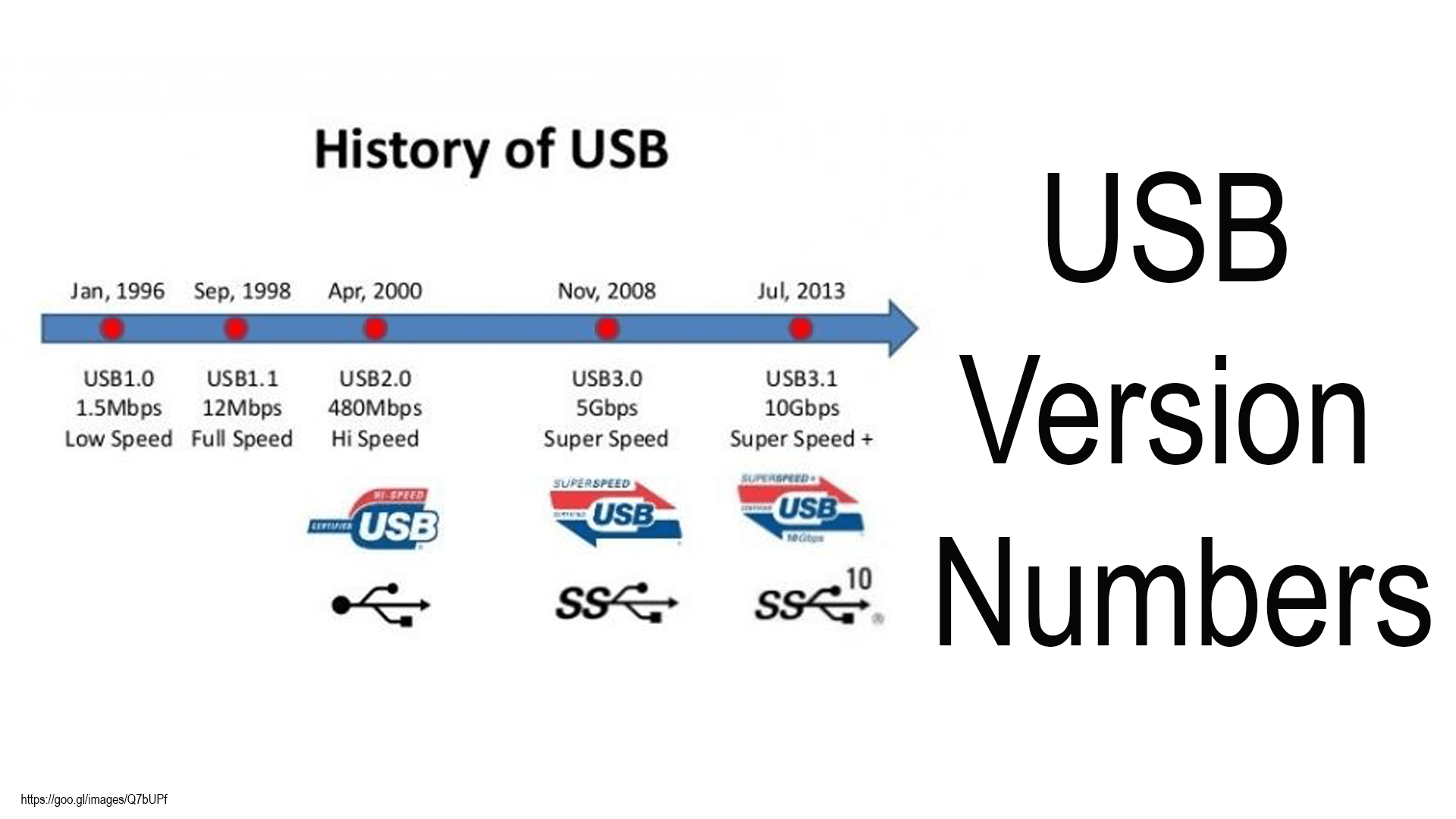Excerpt from: “How to be USB Smart”
Version Number
So far there have been five different versions of USB each brings many improvements. Each version of USB is some times backward and forward compatible. This being the case though you won’t always receive all of the new features.
USB 1.x
Released in January 1996 USB 1.0 had low bandwidth of 1.5 Mbit/s. Then in August, they released USB 1.1 with 12 Mbit/s. At the time of the release of USB 1.0 speed of 1.5-12 Mbit/s was pretty quick but not to today’s standards.
USB 2.0
USB version 2.0 was a more favorable release of the USB standard. Released in 2000 it would quickly become the dominant standard. With speeds up to 480 Mbit/s this was truly the better option. For the next eight years, USB 2.0 would be the default standard for all USB devices. This is the first version to offer multiple connection types. So if you are using an older USB device chances it’s s USB 2.0 port.
USB 3.0
USB 3.0 and above are commonly found with blue ports with blue plugs. Also called SuperSpeed USB or 3.1 Gen(eration) 1. USB 3.0 can have speeds of up to 5 Gbit/s or 625MB/s. compared to USB 2.0’s 480 Mbit/s, version 3.0 is a huge upgrade.
USB 3.1
USB 3.1 Gen(eration) 2 was compatible with “SuperSpeed+” which means up to 10Gbit/s or 1250MB/s. At this point, USB was starting to catch up to the speeds in Intel’s Thunderbolt.
USB 3.2
USB 3.2 released in July of 2017 can double the transfer rate of any certified existing USB 3.1 Gen 1 and 2. This means that with a USB 3.2 port USB 3.1 Gen 1 can now reach speeds of 10Gbit/s and USB USB 3.1 Gen 2 can now reach speeds of 20Gbit/s.
Subscribe: Apple Podcasts | Google Podcasts | Spotify | Amazon Music | Android | Pandora | Blubrry | Email | TuneIn | RSS | More

